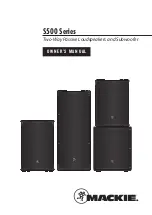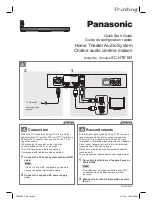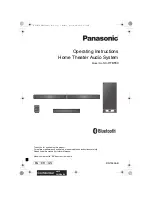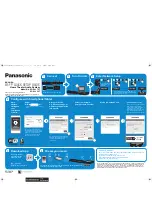
13
2.2 Installation
The different installation steps are described. Before this can
take place, the installation should be wired, leaving all of the
ceiling wiring in place and ready for connection.
Step 1 – Remove the speaker grille:
The grille must be
removed for access to the mounting screws. Insert a pointy
object and introduce it in a grille hole close to the edge. You’ll
remove the grille with ease if using two pointy objects on
opposite ends.
WARNING:
BE CAREFUL NOT TO DAMAGE THE CONE WITH
THE POINTY OBJECT WHEN REMOVING THE GRILLE
Step 2 – Ceiling tile cut out:
The following table lists the
inner and recommended cut out diameters for the different
models and the necessary depth in the ceiling structure to
install the speakers:
Table 1: inner and cut out diameters
Packaged with the speakers is a cardboard cut out template
for scribing the cut out hole onto your ceiling surface. The
inside circumference of the same template can be used to
cover the rest of the speaker when painting.
Therefore the cut out may be scribed using the template
provided or by drawing a circumference of the diameter in
table 1. Once the hole is cut, you may need to pull down the
cables so they are accessible for connection.
Fig. 6 – circular cut out, installation wiring
Step 3 – Terminal connection:
the speakers terminals are
spring loaded. Watch the colour coding for polarity. For
connection to transformer models, you will need to select the
required input power and connect to the appropriate terminals
(see Fig. 7).
MODEL
Depth
INNER
DIAMETRE
CUT OUT
DIAMETRE
CL-5, CL-5T
CL-6, CL-6T
CL-8, CL-8T
CL-6TB
160mm
198mm (7.8 in)
202mm (7.9 in)
70mm
165 mm (6.6 in)
166 mm (6.65 in)
80mm
193 mm (7.7 in)
194 mm (7.76 in)
97mm
237 mm (9.5 in)
238 mm (9.52 in)
Similarly, if one does not wish to use a transformer model, the
number of units in series-parallel can be increased, as long as
4 or more ohms impedance is achieved, as follows.
Each amplifier will drive two loads in parallel. Each will consist
of the parallel connection of as many loads as we want to
connect in series. Each of the latter loads consists of the units
to be series connected (see illustration).
Fig. 4.1 – Series-parallel connection of a large number of
speakers per channel
When working with a large number of units wired this way,
one should ensure that all speakers get enough power.
Otherwise the user will tend to overload the amplifier, which
in turn may result in speaker failure.
Example: for the system on the illustration, assuming CL-6
(40W):
Each channel drives 18 units, for a total of 8x40=720W worth
of speaker power handling. Since amplifier channel should be
100-150% of the speakers’ power handling, 720 to 1000 W
should be used for amplifier power (at 4 ohm).
For very large installations, the (6W) line transformer model
CL-5T should be used.
Fig. 5 – Parallel connection of transformer units
WARNING:
BEFORE INSTALLING THE SPEAKERS, MAKE
SURE THERE IS A MINIMUM CEILING VOID HEIGHT OF 100
MM (4”).
Manual del Usuario /
/
Ceiling Loudspeakers
User’s Manual
Содержание CL-5
Страница 2: ...ceiling ...
Страница 6: ...Manual del Usuario Ceiling Loudspeakers User s Manual ...
Страница 8: ...Manual del Usuario Ceiling Loudspeakers User s Manual ...
Страница 14: ...Manual del Usuario Ceiling Loudspeakers User s Manual ...
Страница 16: ...Manual del Usuario Ceiling Loudspeakers User s Manual ...
Страница 22: ...Manual del Usuario Ceiling Loudspeakers User s Manual ...
Страница 23: ......






































